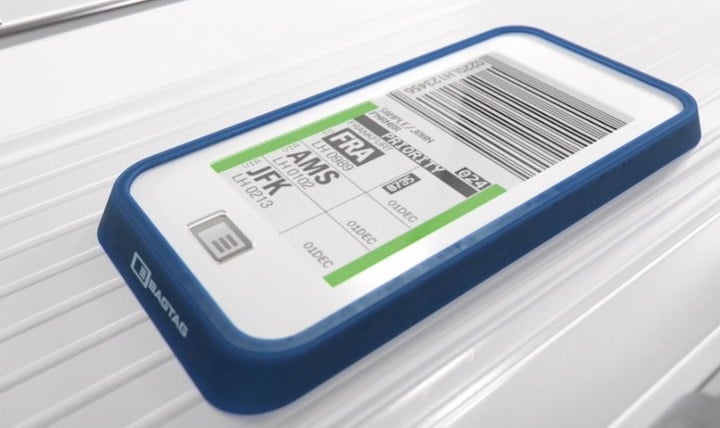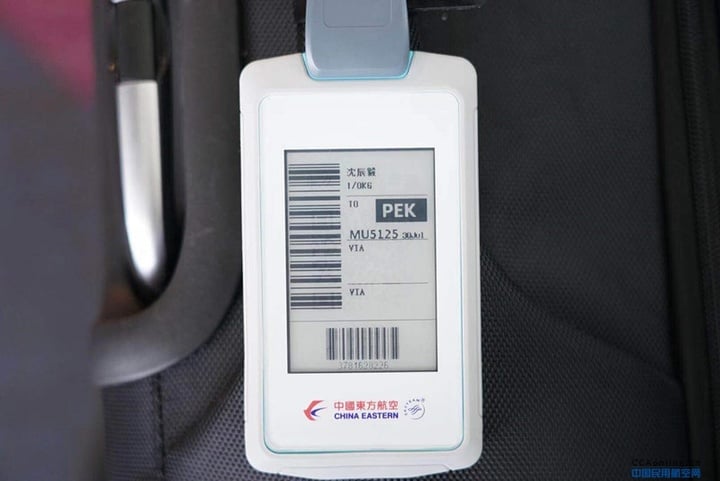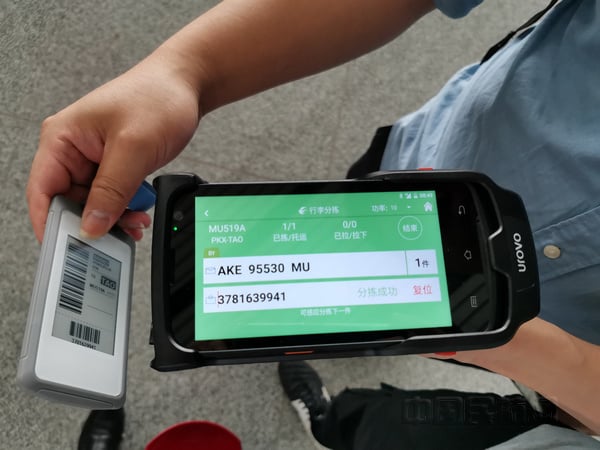Electronic boarding pass is no stranger to us. Nowadays, the trend of paperlessness in the civil aviation industry has spread to baggage consignment. China Eastern Airlines and China Southern Airlines have launched electronic luggage tag services.
China Southern robbed a starter on July 25, becoming the first airline company in China to launch an electronic luggage tag. It is currently piloting at Guangzhou Baiyun Airport.

▲Image from: China Southern Airlines
Although it is digital, but the electronic boarding pass only needs a mobile phone, the electronic luggage tag still needs a physical boarding pass to use, but this boarding pass uses an electronic ink screen, which can be used repeatedly. , exchange data with your mobile phone via NFC or Bluetooth.
China Southern uses Bagtag products, and there are many steps for initial use:
- Install Bagtag app and sign up for an account
- Check in the China Southern Airlines app and click on “Handling E-tickets” (temporary only for flights departing from Guangzhou)
- Bind the Bagtag account by prompt
- Transfer the electronic boarding pass to the mobile phone, and the ink screen of the luggage tag displays the barcode, flight number and other information
- Hang an electronic luggage tag
- After arriving at the airport, go to the self-service check-in machine for check-in
- Check and pick up the baggage number on the China Southern Airlines APP

▲Image from: Weibo user @屁斯
However, China Eastern Airlines also claims to be “first” and has expanded its reach to the world – the world’s first passive electronic luggage tag.
At present, the most common electronic luggage tags in the world are active design, that is, powered by built-in battery. For example, China Southern Airlines Bagtag uses a 3V button battery. The highlight of China Eastern’s electronic boarding pass is “passive”, which means that there is no power supply inside, so the boarding pass is not subject to aviation safety and lithium battery transportation during transportation.

▲ Image from: Chinese Civil Aviation Network< /p>
We know that the electronic ink screen does not consume power when displaying the same text, but it still needs a small amount of electricity when changing the display content. The ticket label of China Eastern Airlines is no exception, but the way to take power is more subtle. ——The power is sensed by the built-in NFC module of the mobile phone, and the passengers close the luggage tag for data exchange, and the power supply is also completed by the way. It is worth mentioning that this NFC wireless power take-off patent is China’s independent intellectual property rights.
Environmental protection or gimmick?
How can you use the electronic luggage tag when you are most concerned about technology? Unfortunately, the current projects of China Eastern Airlines and China Southern Airlines are in the testing stage. China Eastern Airlines has sent the first batch of products to its own high-end members. The limited trial quota of China Southern Airlines has also been released. In view of the cost of electronic luggage tag, it should not be a free product after it is officially launched. For example, British Airways sells for 63 pounds each (about 540 yuan, and the price increases to 80 pounds in October). China Southern Airlines mentioned in the lucky draw. To Bagtag worth 688 yuan, this price will probably disappoint many passengers who want to taste early.

The electronic baggage tags of various airlines use environmental protection as a publicity point, claiming that the electronic boarding pass used for recycling can reduce the consumption of paper. The problem is that the resources for manufacturing each electronic boarding pass are probably only Quite a lot, even though it claims to be able to recycle 2000 or 3000 times, how many passengers can have such a high travel frequency?
If you simplify the check-in procedure, from the steps described above, it is probably a few seconds after labeling the manual counter.
As for tracking the baggage location, it depends mainly on whether the airport supports it. For example, China Southern Airlines has opened the full service tracking service for the checked-in baggage at 15 domestic airports, such as Beijing-Guangzhou-Shenzhen, and swept the QR code of the boarding pass or directly The China Southern Airlines APP can track baggage status without the need for an electronic luggage tag.

▲ Image from: Xinhuanet
If there is any advantage of the electronic luggage tag, it may be reflected in the built-in RFID identification chip to track the position more accurately. The passenger can also update the baggage information in real time after changing the flight, but whether it must be achieved with the help of the electronic luggage tag. It is open to question.
To say the most obvious benefit, perhaps the suitcase doesn’t have to be covered with colorful shipping strips.
Ocean pursuit of innovation is a good thing, I hope that the gimmick is bigger than the actual.